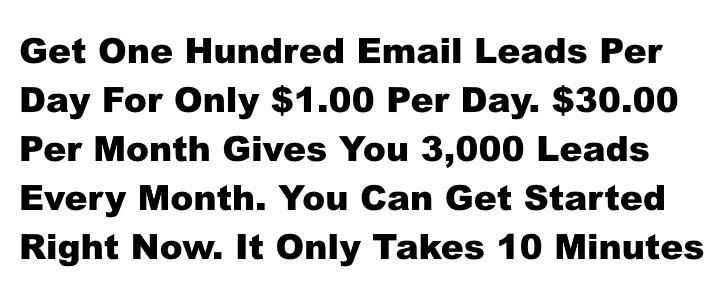
Introduction
Email marketing is a powerful tool that, when used correctly, can significantly boost your business's success. It's a direct line to your audience, offering a chance to build relationships, promote your products or services, and drive sales. But how do you ensure your email marketing efforts are effective? Here are ten important steps to help you become successful with email marketing.
Step 1: Understand Your Audience
Understanding your audience is the cornerstone of any successful email marketing campaign. Knowing who your subscribers are, their interests, and their pain points will help you tailor your content to meet their needs. Use tools like Google Analytics, social media insights, and customer surveys to gather information about your audience. This data will guide your content creation and campaign strategy, ensuring you deliver value with every email.
Step 2: Build a Quality Email List
A high-quality email list is vital for successful email marketing. Focus on building an organic list rather than buying one. Offer incentives like free ebooks, discounts, or exclusive content to encourage sign-ups. Ensure your opt-in process is straightforward and transparent about what subscribers can expect to receive.
Step 3: Choose the Right Email Marketing Service
Selecting the right email marketing service is crucial. Look for a platform that offers robust analytics, easy-to-use design tools, and automation capabilities. Popular options include Mailchimp, Constant Contact, and ConvertKit. These services can help streamline your campaigns and provide valuable insights into their performance.
Step 4: Create Engaging Content
Your email content needs to be engaging to capture your audience's attention. Start with a compelling subject line that encourages opens. Then, focus on writing persuasive copy that resonates with your readers. Include a clear call to action (CTA) and ensure your content provides value, whether through educational information, special offers, or entertaining stories.
Step 5: Design Visually Appealing Emails
A well-designed email can make a big difference. Use a clean, professional layout that aligns with your brand. Incorporate images, videos, and other multimedia elements to make your emails more visually appealing. Ensure your design is mobile-friendly, as a significant portion of email opens occur on mobile devices.
Step 6: Segment Your Audience
Segmentation allows you to send more targeted and relevant emails. Divide your email list into segments based on demographics, behavior, purchase history, or engagement levels. This approach can lead to higher open and click-through rates, as your subscribers receive content that is more aligned with their interests.
Step 7: Personalize Your Emails
Personalization goes beyond addressing subscribers by their first names. Use data to tailor the content of your emails to individual preferences and behaviors. Personalized emails can significantly boost engagement and conversion rates, making your subscribers feel valued and understood.
Step 8: Automate Your Campaigns
Automation can save you time and ensure timely communication with your audience. Set up automated workflows for welcome emails, abandoned cart reminders, post-purchase follow-ups, and more. Automation tools can help maintain consistent engagement without requiring constant manual effort.
Step 9: Test and Optimize Your Emails
Testing is essential for optimizing your email campaigns. Conduct A/B tests to compare different subject lines, email designs, CTAs, and send times. Use the insights gained from these tests to refine your strategy and improve performance. Key metrics to track include open rates, click-through rates, conversion rates, and unsubscribe rates.
Step 10: Ensure Compliance with Regulations
Staying compliant with email marketing regulations is critical to avoid legal issues and maintain trust with your audience. Familiarize yourself with laws like GDPR and CAN-SPAM, and implement best practices such as including an easy opt-out option and respecting subscriber preferences.
Conclusion
Email marketing can be a highly effective way to connect with your audience and grow your business. By following these ten steps—understanding your audience, building a quality list, choosing the right service, creating engaging content, designing visually appealing emails, segmenting your audience, personalizing your emails, automating campaigns, testing and optimizing, and ensuring compliance—you can maximize your email marketing success. Start implementing these strategies today and watch your email marketing efforts pay off.
FAQs
How often should I send emails to my subscribers?
It depends on your audience and the type of content you're sharing. Generally, once a week is a good starting point, but you should monitor engagement and adjust as needed.
What are some common mistakes to avoid in email marketing?
Common mistakes include not segmenting your list, neglecting mobile optimization, using poor-quality images, and failing to provide valuable content.
How can I improve my email open rates?
Improve open rates by crafting compelling subject lines, personalizing your emails, and ensuring your emails are mobile-friendly.
What types of emails should I send to my audience?
Send a mix of emails, including newsletters, promotional offers, product updates, and personalized recommendations.
Is it better to buy an email list or build one organically?
Building an email list organically is always better. Purchased lists often contain unengaged or irrelevant contacts, which can harm your sender reputation and reduce engagement.
Thank You!
-Social Stephen
LinkPo.st/SocialStephen
Stephen@linkpost.me


